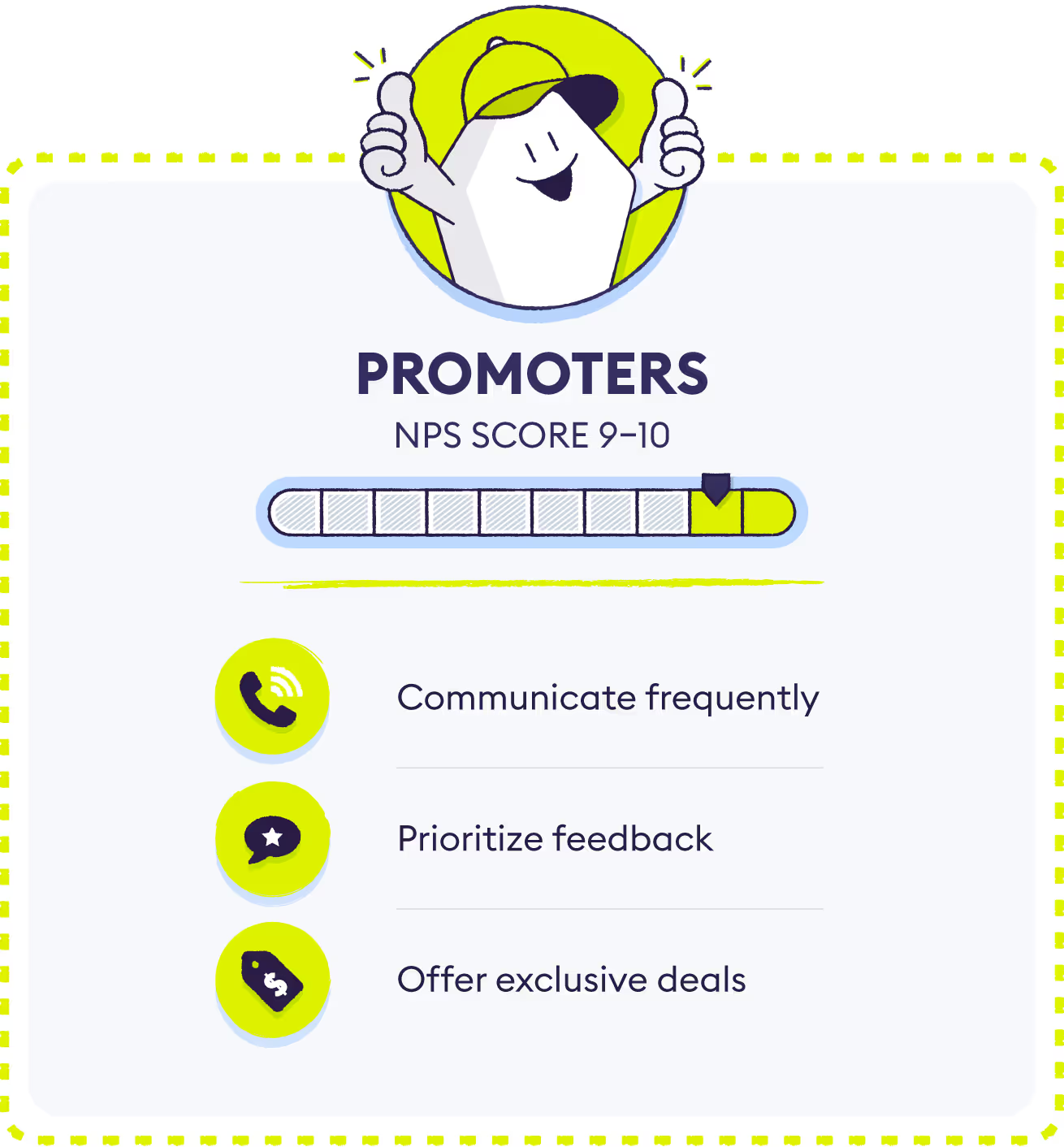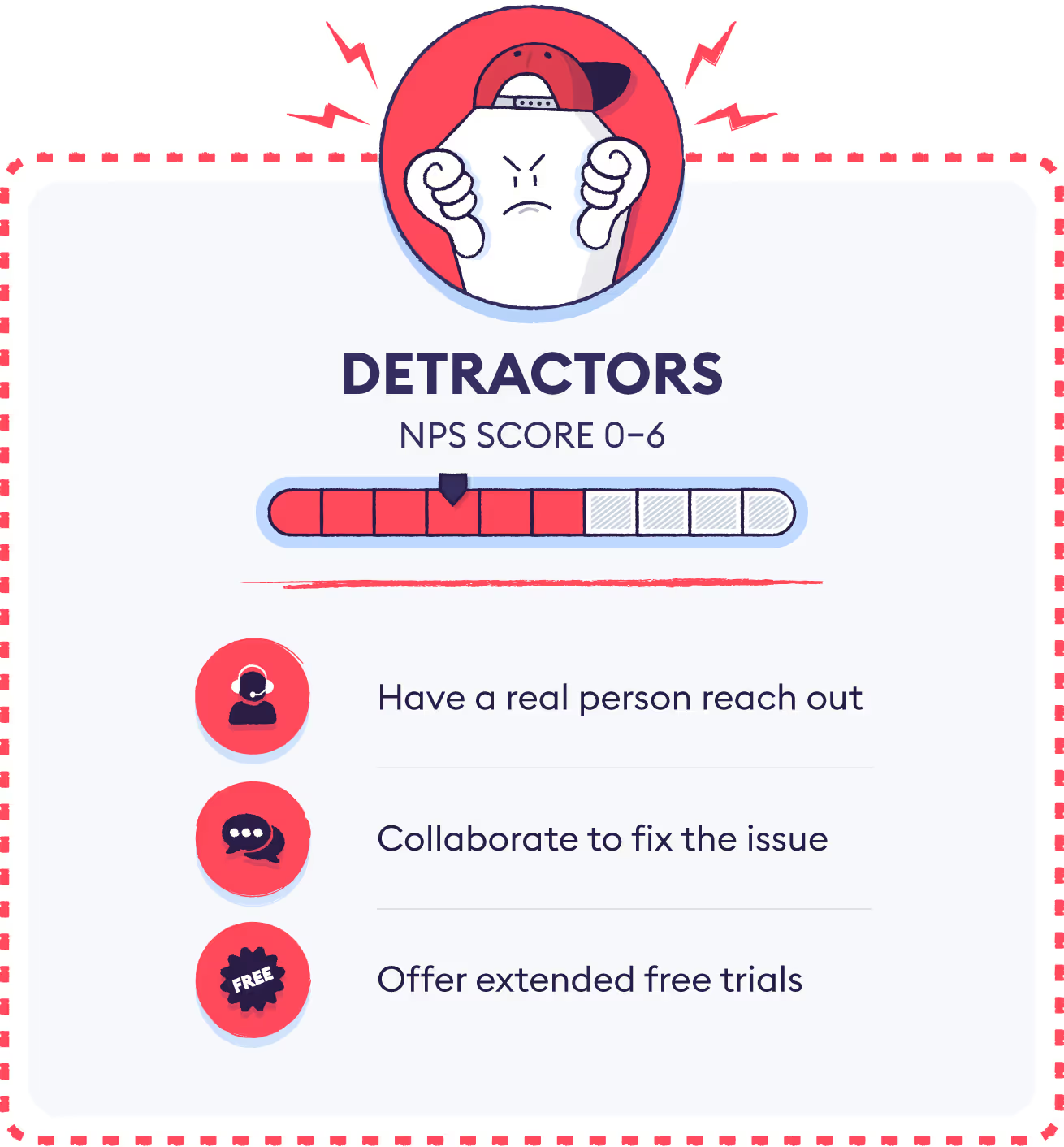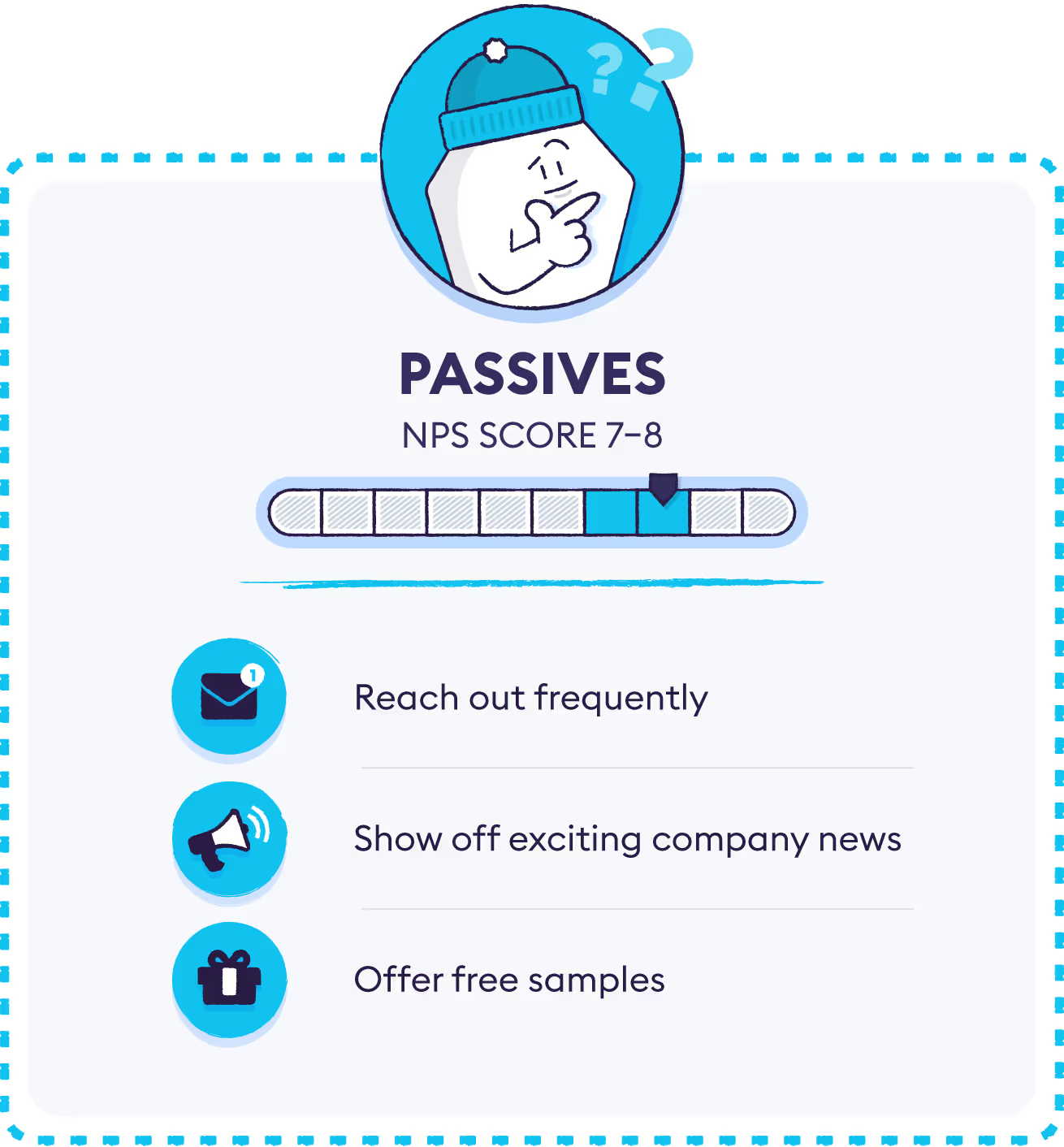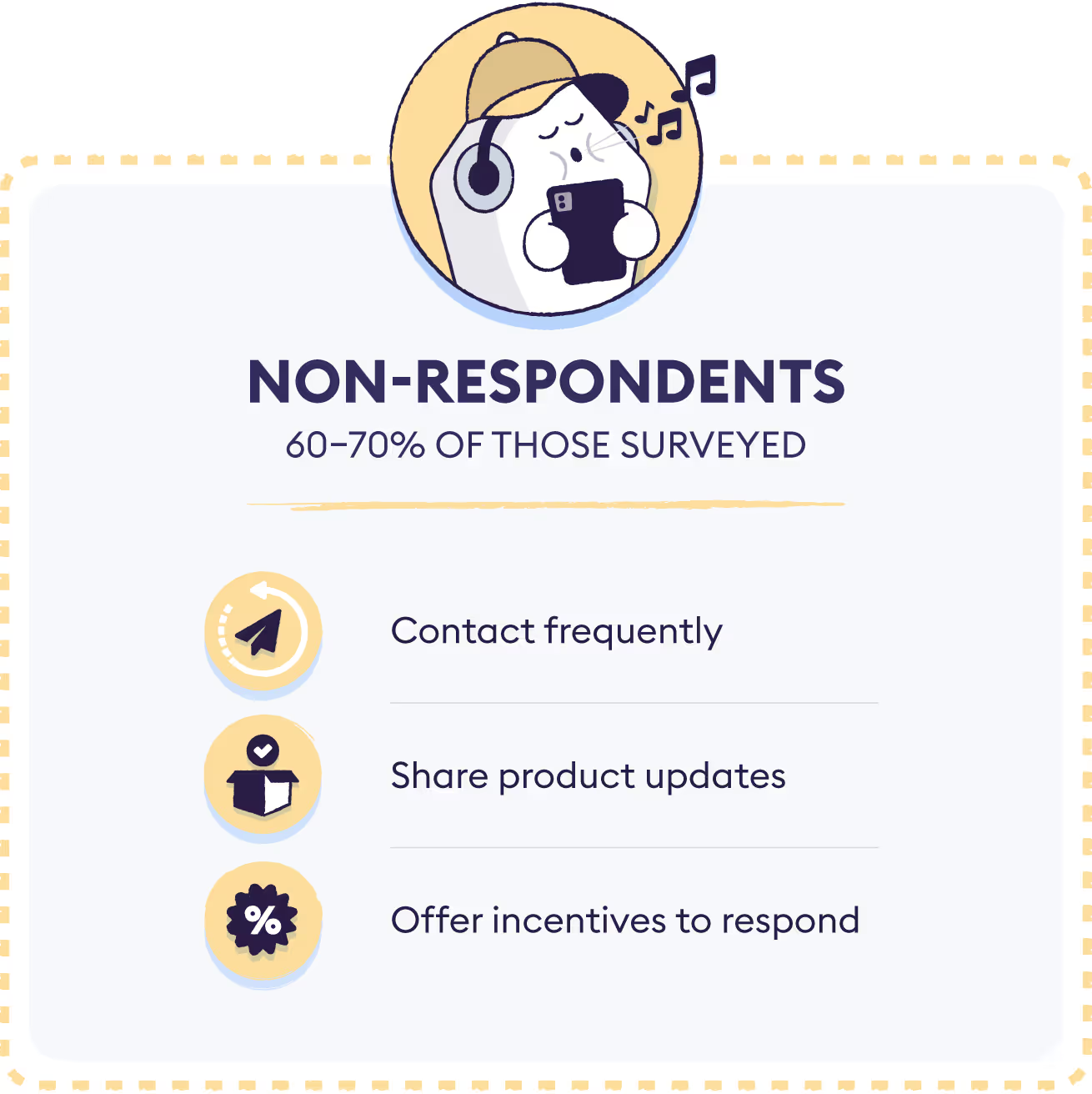Customer Feedback Loop: What It Is & How to Close It
Creating an exceptional customer experience is essential for building products and experiences that your customers will keep coming back to.
Working to close the customer feedback loop is an ongoing strategy for improving customer satisfaction and CX. By constantly talking with your customers about where you can improve, and by implementing and communicating these changes, you can work to reduce your churn rate and earn an increasingly loyal customer base.
In this guide, we’ll break down the customer feedback loop, why it’s essential to growth, and how you can close it effectively to improve retention, loyalty, and satisfaction.
What is the Customer Feedback Loop?

A customer feedback loop is the continuous process of collecting customer insights, analyzing them, taking action, and communicating those changes back to your audience.
It’s called a “loop” because it never truly ends. Each round of feedback leads to another cycle of learning and improvement. When done right, your customers become co-creators of your product experience.
Customer needs are constantly changing, so continuous communication is essential to make sure a product fulfills those needs.
In short:
Collect → Analyze → Act → Communicate → Repeat
Why Closing the Customer Feedback Loop Matters
Closing the customer feedback loop is important because it reduces customer churn and boosts customer acquisition.
Having to constantly rely primarily on new customers will quickly suck away any marketing budget.
When customers see that their feedback leads to real change, they become more engaged, more loyal, and more likely to recommend your brand. This creates a self-reinforcing cycle of improvement, advocacy, and retention.
Closing the customer feedback loop permanently isn’t actually possible, which is the whole point of the program in the first place.
It’s not an end goal to achieve, but rather a continuous process to improve which places the customer experience at the center. Feedback helps get to the root of how you can improve your product and expand the depth of its appeal.
According to research from CustomerGauge, companies that actively close the loop with customers experience up to three times more promoters and a significant reduction in churn.
Other benefits include:
- Lower churn rates: Retain existing customers more effectively.
- Higher satisfaction scores (NPS, CSAT, CES): Customers feel heard and valued.
- Increased referrals: Promoters naturally become advocates.
- Product innovation: Customer-driven insights uncover unmet needs faster.
The 4 Steps of a Customer Feedback Loop
If you’re a frequent visitor to our blog, then you’ve likely seen these steps before (our piece on customer feedback analysis for example). That’s because almost any CX program relies on these three basic principles. However, there are many different ways that you can ultimately use these steps to flesh out your understanding of your customer, such as creating a customer journey map or identifying your voice of the customer. Here’s how it works for customer feedback loops.
Step 1: Collect Feedback from Multiple Sources
The foundation of any feedback loop is data collection. To understand what your customers think, you need consistent input from multiple touchpoints:
- Customer surveys (NPS, CSAT, CES)
- Chat transcripts and call recordings
- Customer Feedback across multiple channels
- Online reviews
- Social media mentions and direct messages
- In-app feedback widgets
- Website behavior (bounce rates, abandoned carts)
- Focus groups or beta tester programs
A combination of these methods, depending on your budget, is best to get a well-rounded view of customer interactions, likes, and dislikes. Combine qualitative and quantitative data to get a full picture of customer sentiment. For a deeper dive into tools that help capture the voice of the customer, check out our guide on Voice of Customer Tools.
Step 2: Analyze the Feedback
Once you have your feedback you can start to examine it for trends and insights into what’s working for your customer and what isn’t.
For example, you may notice that a certain product has a high abandoned cart rate. When combining this data with feedback you collected via surveys, you may realize that your competitor recently launched a similar but cheaper version of your product or that a prominent influencer recently gave it a negative review.
Analyzing customer feedback is easier said than done, so be sure to check out the following guides to make sure you’re drawing accurate conclusions from your data.
- Our guide on coding qualitative data will walk you through the steps of transforming written customer feedback into numbers that can be analyzed
- Our guide on survey data analysis explains how to combine demographics and data for deeper insights and how to make sure your sample sizes remain statistically significant
Additionally, you can start by grouping feedback into themes like, pricing, usability, support quality, product features, and then look for patterns or repeated pain points.
Methods to enhance your analysis include:
- Sentiment analysis: Understand emotional tone.
- Text analytics: Quantify qualitative data.
- Segmentation: Compare experiences across customer types (e.g., free vs. paid, new vs. existing).
At this stage, the goal isn’t just to know what customers said, but why they said it, and what change will make the biggest impact.
Step 3: Act on the Insights & Implement Changes Based on Priority
When you start analyzing feedback captured from each section of the customer journey, you’ll notice themes emerging within the feedback. Maybe your checkout process is unclear or a certain item is faulty and you need to remove it from the product line. Crucially, what matters is that you’ll be able to identify actionable insights to drive change in your organization.
How to Decide on Priority?
When deciding which actions to prioritize, you can use customer feedback along with other sources of data to segment users, for example, paid vs free plans or customers located in Germany vs South Korea, in order to evaluate which changes will have the greatest positive effect. You can build your plan upward from there. Remember, the customer feedback loop is an ongoing process so you’ll constantly be updating and refining your services.
Data is only as powerful as the action it drives. Once you know what needs improving, prioritize fixes that will have the greatest customer impact.
Examples include:
- Simplifying confusing onboarding steps.
- Adding missing features customers consistently request.
- Refining your pricing or packaging model.
- Addressing recurring support issues.
Ensure the responsible teams — product, design, marketing, or support — are aligned and accountable for implementing changes. Create a simple internal workflow so feedback moves efficiently from collection → insight → action.
Step 4: Follow Up and Communicate Back
This is the step many companies skip, and the one that can transform your CX.
Once improvements are made, close the loop by telling customers what changed because of their feedback.
Examples of effective follow-ups include:
- Email updates (“You asked, we listened — here’s what’s new!”)
- In-app release notes with customer quotes.
- Public changelogs or blog posts about updates.
- Direct personal outreach to customers who raised specific concerns.
Not only does this show appreciation, it turns customers into active participants in your success. The result? A continuous cycle of trust and engagement.
How to Close the Feedback Loop for Different Customer Types
Many organizations use Net Promoter Score (NPS) to segment their customers into three categories; Promoters, Passives, and Detractors. Each group requires a different approach to close the loop effectively. There are many customer satisfaction metrics that help us better understand sentiment, a full guide can be found here.
Promoters (NPS 9–10)
Brand promoters are customers who land on the 9-10 range on the NPS scale. They’re very satisfied or even thrilled with their experience and won’t hesitate to recommend your brand to others. Though promoters are the easiest types of customers to deal with, don’t make the mistake of thinking that the customer feedback loop is closed for them.
Promoters make up the most valuable core of your customer base, so don’t take them for granted and make sure to always show your appreciation where you can.
- Thanking them personally for feedback.
- Offering early access to new products or beta tests.
- Encouraging reviews or referrals through incentive programs.
- Continuing to ask what else they’d like to see improved.
You should be communicating with your promoters frequently and continue to gather feedback on what they’d like to see change with your business, and these changes should be prioritized above all others. Depending on the structure of your company, you can also ask promoters for referrals to identify new long-term customers as well.

Detractors (NPS 0–6)

Brand detractors are current, or more likely, former customers who land in the 0-6 range of the NPS scale, meaning they are not likely to recommend your brand to others. Though difficult to re-engage, you should take note that detractors were likely invested in your brand before they churned. Only a high level of disappointment or frustration would motivate someone enough to leave a negative review.
Best ways to reach out to detractors:
The best way to reach back out to a detractor and get the customer feedback loop started again is through a personal approach. No automatic “we’re sorry to see you go” emails, no scripted phone calls. Have an actual human member of your customer service team reach out with a personalized message to show that you really are sad they had a bad experience.
If they respond to your outreach, you should work closely and diligently with them to solve their issue and show how you will prevent this from happening again. Along with your initial message, you can of course also include discounts and extended premium trial periods to try to entice them to come back and give you another shot.
Passives (NPS 7–8)

Passives fall on the 7-8 range of the NPS scale and are the trickiest group to close the customer feedback loop with. Because passives lack the excitement of promoters and the investment/frustration of detractors, they’re particularly vulnerable to competitors. If there’s a better deal to be found somewhere else, there’s nothing to keep them tied to your brand.
To get ahead of this potential for churn, engage with passives as often as you can (without being annoying)
- Highlighting product improvements that address their past feedback.
- Sharing success stories and community updates.
- Providing targeted discounts or exclusive educational content.
Everyone loves free stuff, so in addition to frequent communication, you should offer them plenty of free samples and larger discounts to encourage them to give your products another look. By demonstrating how excited you are to have them as a customer, you can get them excited about being a customer and encourage a healthier customer feedback loop.
Non-Respondents

The unfortunate truth is that most customers won’t respond to your feedback surveys, which makes it difficult to close the loop with them. Though NPS survey response rates are higher than average (30-40% according to Retently) it’s still tough to realize that you’re not hearing from more than half of your customers. Engagement tactics for non-responders are similar to passives.
The key is to reach out frequently, get them excited enough by your brand to feel motivated to fill out the survey, and offer incentives like discounts or samples in return for their time.
Even if you’re only able to convince a few non-respondents, that’s a few more data points you can add to your customer feedback loop and work with to provide an even better customer experience.
Chattermill can help you close the customer feedback loop by providing the means to collect and analyze feedback at scale, freeing up valuable bandwidth for your team to focus on implementation. Learn more about our Customer Feedback Platform for Businesses here.
Tools and Technology That Simplify the Feedback Loop
As your business scales, manually managing feedback becomes difficult. That’s where feedback analytics platforms like Chattermill help.
With AI-powered text and sentiment analysis, you can automatically:
- Gather feedback across every channel.
- Identify patterns and trends at scale.
- Route actionable insights to the right teams.
- Monitor changes and track impact over time.
This saves valuable time and ensures every customer voice is accounted for, including the passives and detractors.
Common Challenges in Managing Feedback Loops
Even with the right systems, most organizations struggle with the following 4 things:
- Volume overload: Too much unstructured data to process manually.
- Cross-team coordination: Feedback not reaching the right decision-makers.
- Delayed action: Insights collected but not acted upon quickly enough.
- Communication gaps: Failing to follow up with customers after action is taken.
Overcoming these challenges requires both technology and culture, empowering teams to treat customer feedback as a continuous dialogue to help inform and improve products and services, and overall, customer satisfaction.
Chattermill can help you close the customer feedback loop by providing the means to collect and analyze feedback at scale, freeing up valuable bandwidth for your team to focus on implementation. Learn more about our Customer Feedback Platform for Businesses here.
Ready to close your customer feedback loop?
Chattermill helps you collect, analyze, and act on customer insights in real-time — so you can turn every voice into a growth opportunity.
Customer Feedback Loop: FAQs
What is a customer feedback loop?
A customer feedback loop is the process of collecting customer feedback, analyzing it, and taking action to improve products, services, or experiences. It ensures that customer voices directly influence business decisions.
Why is a customer feedback loop important?
It creates a continuous cycle of improvement by turning feedback into actionable changes. This builds trust, strengthens loyalty, and shows customers their opinions are valued.
What are the stages of a customer feedback loop?
The key stages include:
- Collecting feedback through surveys, reviews, or interactions.
- Analyzing responses to identify trends and insights.
- Acting on insights by making improvements.
- Closing the loop by communicating changes back to customers.
How does closing the loop improve customer relationships?
Closing the loop shows customers that their feedback drives real change. This strengthens trust and can turn detractors or passives into loyal advocates.
What tools support customer feedback loops?
Tools include survey platforms, feedback analytics software, CRM systems, and AI-driven sentiment analysis, which help streamline the collection and analysis process.
How often should businesses run feedback loops?
Feedback loops should be continuous, with real-time monitoring where possible, and periodic reviews to track long-term trends and improvements.
How do feedback loops impact customer satisfaction?
They improve satisfaction by addressing issues quickly, enhancing products and services, and ensuring customers feel heard and valued.
What challenges do businesses face in creating feedback loops?
Challenges include gathering consistent feedback, analyzing unstructured data, and ensuring that insights lead to meaningful and visible action.















